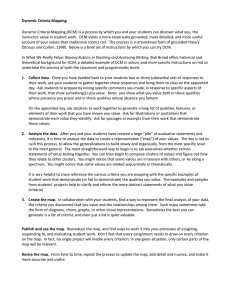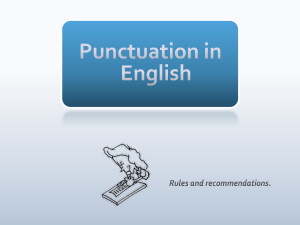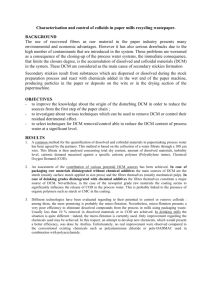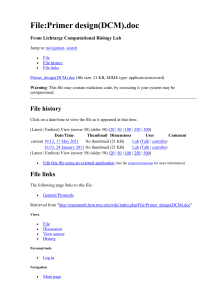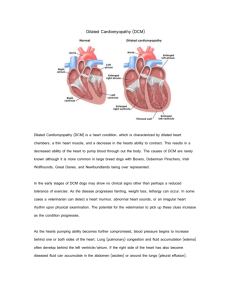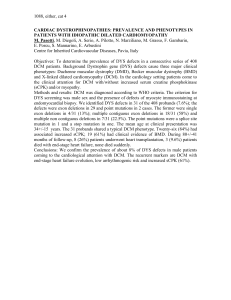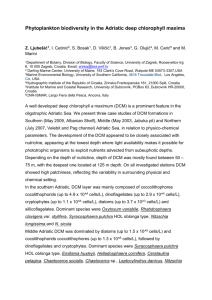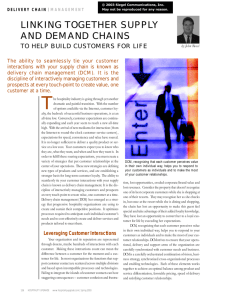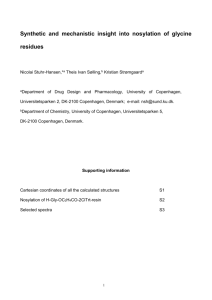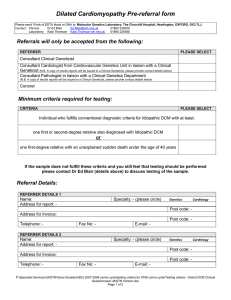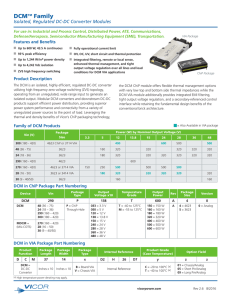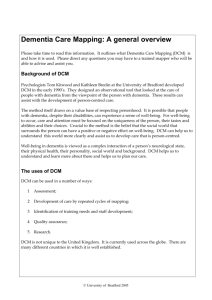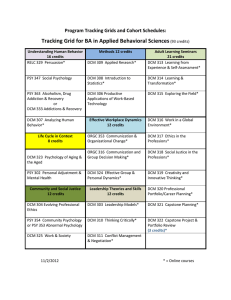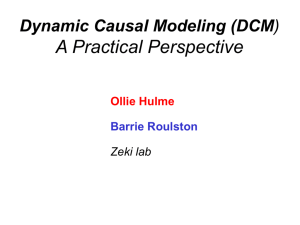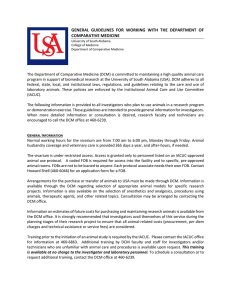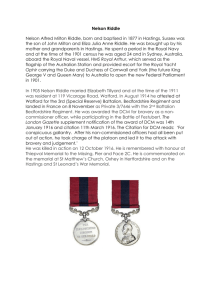DCM - With Colleagues
advertisement
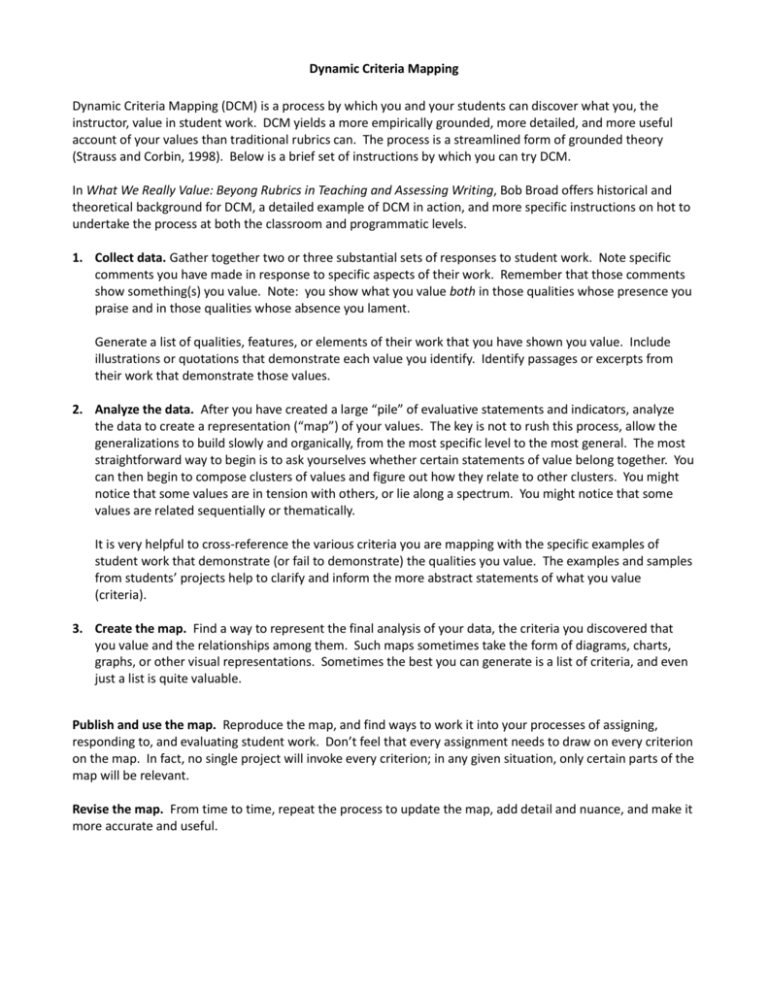
Dynamic Criteria Mapping Dynamic Criteria Mapping (DCM) is a process by which you and your students can discover what you, the instructor, value in student work. DCM yields a more empirically grounded, more detailed, and more useful account of your values than traditional rubrics can. The process is a streamlined form of grounded theory (Strauss and Corbin, 1998). Below is a brief set of instructions by which you can try DCM. In What We Really Value: Beyong Rubrics in Teaching and Assessing Writing, Bob Broad offers historical and theoretical background for DCM, a detailed example of DCM in action, and more specific instructions on hot to undertake the process at both the classroom and programmatic levels. 1. Collect data. Gather together two or three substantial sets of responses to student work. Note specific comments you have made in response to specific aspects of their work. Remember that those comments show something(s) you value. Note: you show what you value both in those qualities whose presence you praise and in those qualities whose absence you lament. Generate a list of qualities, features, or elements of their work that you have shown you value. Include illustrations or quotations that demonstrate each value you identify. Identify passages or excerpts from their work that demonstrate those values. 2. Analyze the data. After you have created a large “pile” of evaluative statements and indicators, analyze the data to create a representation (“map”) of your values. The key is not to rush this process, allow the generalizations to build slowly and organically, from the most specific level to the most general. The most straightforward way to begin is to ask yourselves whether certain statements of value belong together. You can then begin to compose clusters of values and figure out how they relate to other clusters. You might notice that some values are in tension with others, or lie along a spectrum. You might notice that some values are related sequentially or thematically. It is very helpful to cross-reference the various criteria you are mapping with the specific examples of student work that demonstrate (or fail to demonstrate) the qualities you value. The examples and samples from students’ projects help to clarify and inform the more abstract statements of what you value (criteria). 3. Create the map. Find a way to represent the final analysis of your data, the criteria you discovered that you value and the relationships among them. Such maps sometimes take the form of diagrams, charts, graphs, or other visual representations. Sometimes the best you can generate is a list of criteria, and even just a list is quite valuable. Publish and use the map. Reproduce the map, and find ways to work it into your processes of assigning, responding to, and evaluating student work. Don’t feel that every assignment needs to draw on every criterion on the map. In fact, no single project will invoke every criterion; in any given situation, only certain parts of the map will be relevant. Revise the map. From time to time, repeat the process to update the map, add detail and nuance, and make it more accurate and useful.
